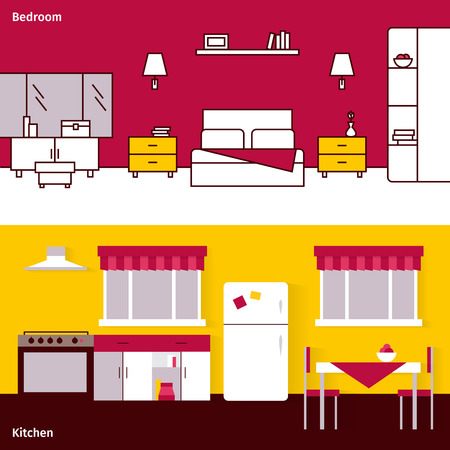Introduction to Energy Efficiency in UK Homes
Energy efficiency has become a top priority for households across the UK, not only as a way to reduce utility bills but also as a crucial step towards achieving national environmental goals. With rising energy costs and growing concerns about climate change, many British families are searching for practical ways to lower their energy consumption while maintaining comfort at home. Despite these efforts, there are still significant challenges that need to be addressed. Many older properties in the UK struggle with poor insulation, outdated heating systems, and draughty windows, making them less energy-efficient than modern builds. The government recognises these issues and has set ambitious targets to cut carbon emissions from homes, aiming for net zero by 2050. This involves encouraging homeowners to adopt greener technologies and improve their home’s energy performance through various grants, incentives, and regulations. As we explore the latest innovations and best practices in energy-efficient homes, its clear that embracing these changes is not only beneficial for the environment but also for everyday living—helping families stay cosy while saving on their monthly outgoings.
Innovative Building Materials and Insulation Solutions
Energy-efficient homes in the UK are increasingly defined by their use of cutting-edge materials and clever insulation strategies. The often chilly and damp British climate means that traditional building techniques can fall short when it comes to retaining heat and reducing energy waste. To address this, homeowners and builders are turning to modern solutions that not only conserve energy but also create comfortable living spaces year-round.
Triple Glazing: Enhanced Window Performance
One major innovation is the widespread adoption of triple glazing. Unlike standard double-glazed windows, triple glazing incorporates an extra pane of glass, creating two insulating air gaps instead of one. This design dramatically improves thermal performance, cuts down draughts, and helps keep heating bills in check. In fact, many new builds and retrofits across the UK now specify triple glazing as a standard for both energy efficiency and noise reduction—perfect for busy urban areas or those living near main roads.
Advanced Insulation Materials
Insulation has also seen impressive advances. Where once fibreglass or mineral wool were the norm, modern homes now benefit from materials like rigid foam boards, sheep’s wool, and even recycled newspaper (cellulose). These innovative products offer better thermal retention and are often easier to install in awkward loft spaces or period properties with solid brick walls. Below is a comparison table highlighting common insulation options and their typical benefits:
| Material | Thermal Performance (U-value) | Eco-Friendliness | Best For |
|---|---|---|---|
| Rigid Foam Board | Very Low (Highly Efficient) | Moderate (Petrochemical-based) | Walls, floors, roofs |
| Sheep’s Wool | Low (Good Efficiency) | High (Natural & Renewable) | Lofts, attics |
| Cellulose (Recycled Paper) | Low (Good Efficiency) | Very High (Recycled Content) | Cavities, lofts |
| Mineral Wool | Moderate (Standard Efficiency) | Moderate (Some Recycled Content) | Cavities, between joists |
Eco-Friendly Construction Methods
The push for sustainability goes beyond just what goes into the walls. Many UK homeowners are choosing eco-friendly construction methods such as timber frames from responsibly managed forests, clay blocks with high thermal mass, or lime-based renders that help regulate humidity. These approaches not only enhance insulation but also contribute to healthier indoor environments—a real win during those long British winters when windows stay firmly shut.
The Local Touch: British Standards & Innovation
The UK has its own set of building regulations—like Part L of the Building Regulations—that set minimum standards for energy efficiency. These rules encourage innovative thinking among architects and tradespeople who must blend traditional British aesthetics with cutting-edge performance. From retrofitting Victorian terraces with internal wall insulation to specifying green roofs on new developments, theres a distinctly local flavour to how these innovations are put into practice.

3. Smart Technology and Renewable Energy Integration
Across the UK, homeowners are embracing a new wave of energy-saving solutions by integrating smart technology and renewable energy into their daily lives. Smart thermostats, such as Hive and Nest, have become increasingly popular in British households. These devices allow residents to control their heating remotely via smartphone apps, adjusting settings on-the-go or scheduling heating according to daily routines. This not only adds convenience but also prevents unnecessary energy use—especially important in the unpredictable British climate. For example, a family in Manchester reported saving up to 15% on their annual heating bills after installing a smart thermostat and setting it to lower temperatures while they were at work or away for the weekend.
Heat pumps are another innovation gaining traction, particularly air source heat pumps, which extract heat from the outside air—even on chilly UK days—and transfer it indoors. While the initial investment can be significant, government incentives such as the Boiler Upgrade Scheme help offset costs for homeowners keen to make the switch from traditional gas boilers. In rural areas like Cornwall, where mains gas is less accessible, heat pumps have become a practical solution for maintaining comfortable indoor temperatures year-round without relying on fossil fuels.
Solar panels are also making their mark across Britain’s rooftops. Thanks to schemes like the Smart Export Guarantee, homeowners who generate more electricity than they use can sell surplus energy back to the grid. Take Jane from Brighton: after installing solar panels in her semi-detached house, she noticed her electricity bills drop dramatically during sunnier months and enjoyed peace of mind knowing she was reducing her carbon footprint. Many families also pair solar panels with battery storage systems, maximising self-consumption even after sunset—a clever way to beat rising energy prices.
By blending these smart technologies with renewable energy options, UK homes are becoming models of efficiency and sustainability—proof that small changes at home can add up to a big difference for both budgets and the environment.
4. Best Practices in Everyday Home Energy Management
Living in the UK means adapting to a variety of weather conditions and keeping a keen eye on energy bills. Fortunately, there are practical, daily strategies that homeowners can implement to make their homes more energy-efficient without major renovations or hefty investments. Below are some best practices specifically tailored for UK households:
Draught-Proofing and Insulation
One of the simplest ways to conserve heat is by draught-proofing doors, windows, and even letterboxes—a common feature in British homes. Fitting excluders or using self-adhesive foam strips helps prevent warm air from escaping and cold air from sneaking in. Pair this with quality loft insulation and consider thick curtains for extra warmth during chilly months.
Mindful Appliance Use
Everyday habits make a difference. Simple actions like only boiling the amount of water you need in your kettle, washing clothes at lower temperatures, or running dishwashers and washing machines with full loads can all cut down on unnecessary energy use. Remember to switch appliances off at the plug rather than leaving them on standby; ‘vampire’ devices are notorious for quietly draining power.
Lighting Choices
Switching to LED bulbs throughout the home is a quick win—they use up to 80% less energy than traditional incandescent bulbs and last much longer. Make the most of natural daylight where possible, and get into the habit of turning lights off when leaving a room.
Smart Heating Control
The British weather can be unpredictable, so investing in a smart thermostat is especially handy. These devices allow you to set heating schedules based on your routine, ensuring you’re only using energy when you truly need it.
Quick Reference Table: Energy-Saving Tips for UK Homes
| Action | Potential Annual Savings* |
|---|---|
| Draught-proofing doors/windows | £45-50 |
| Switching off standby appliances | £60-80 |
| LED lighting throughout home | £30-40 |
| Washing clothes at 30°C | £10-15 |
*Savings estimates based on average UK household data (2024)
Cultivating these everyday habits not only lowers your carbon footprint but also results in tangible savings over time—proof that small changes add up quickly in British homes.
5. Government Schemes and Financial Incentives
For many UK homeowners, making energy-efficient improvements can feel like a daunting investment. Thankfully, a range of local grants, government-backed schemes, and incentives are available to help ease the burden. The Energy Company Obligation (ECO4) is one of the most prominent, requiring larger energy suppliers to help households—particularly those on lower incomes or in vulnerable situations—improve their home’s efficiency with measures like insulation and heating upgrades. Additionally, the Green Deal offers loans that are repaid through savings on your energy bill, making it easier to invest in double glazing, draught-proofing, or even solar panels without hefty upfront costs.
For those aiming for more substantial renovations, the Home Upgrade Grant and Boiler Upgrade Scheme are worth considering. The former targets off-gas grid homes with funding for heat pumps and insulation, while the latter helps cover the cost of replacing old gas boilers with low-carbon alternatives. Local councils across England, Scotland, Wales and Northern Ireland often have their own grants and support programmes too—so it’s always worth checking your council’s website or speaking directly to their sustainability or housing team.
Accessing these schemes is generally straightforward: start by obtaining an Energy Performance Certificate (EPC), which highlights areas for improvement in your property. Then consult trusted sources such as the Simple Energy Advice service or Citizens Advice Bureau for step-by-step guidance on eligibility and application processes. Remember to collect all necessary documentation early—such as proof of income or home ownership—to streamline your application.
With a little research and some paperwork, these schemes make it far more realistic to transform your British home into an energy-efficient sanctuary—saving money on bills while doing your bit for the environment.
6. Case Studies: Sustainable Living Across the UK
Real-life examples shine a light on how energy-efficient living is transforming communities from bustling cities to peaceful countryside. Let’s explore inspiring stories of British households and neighbourhoods embracing sustainable innovation.
London Flats: Smart Solutions in Small Spaces
In the heart of London, a young couple renovated their Victorian flat with double-glazed sash windows, underfloor insulation, and smart heating controls. By adopting LED lighting and energy-efficient appliances, they’ve cut their bills by a third—proving you don’t need a huge home to make a big impact. Their story inspires other city dwellers to think creatively about saving energy in compact spaces.
Manchester Terraces: Community Retrofit Projects
A row of terraced houses in Manchester joined forces for a community retrofit project. With government grants, they installed external wall insulation, solar panels, and high-efficiency boilers. The neighbours share tips through WhatsApp groups and hold regular workshops, creating a supportive network. These efforts not only reduce emissions but also foster a stronger sense of togetherness and pride in their area.
Cornish Cottages: Blending Heritage with Innovation
In rural Cornwall, an old stone cottage was transformed by its owners into an exemplar of green living. They insulated the loft with sheep’s wool—a nod to local resources—and added triple-glazed windows without altering the property’s character. A ground source heat pump provides warmth even in winter’s chill. By respecting tradition while introducing new tech, they demonstrate how historic homes can embrace sustainability.
Edinburgh Tenements: Collective Action for Warmer Homes
Residents of an Edinburgh tenement block banded together to upgrade draughty communal areas and replace ancient heating systems. Through joint action and council support, their stairwell is now better insulated, and shared laundry facilities are powered by renewables. These improvements have made everyone more comfortable and cut down on costs—proof that cooperation is key in shared buildings.
Liverpool Suburbs: Eco Neighbourhood Initiatives
In Liverpool’s leafy suburbs, a group of families started an ‘eco street’ project. By planting trees for shade, promoting cycling, and bulk-buying energy-saving gadgets, they’ve created a greener, more connected neighbourhood. Their journey shows how small changes add up—and how sharing knowledge can ripple out across whole communities.
These case studies illustrate that across the UK—from urban flats to rural retreats—energy-efficient living is both achievable and deeply rewarding. As more households adopt best practices and innovations, every home becomes part of the solution for a more sustainable future.


